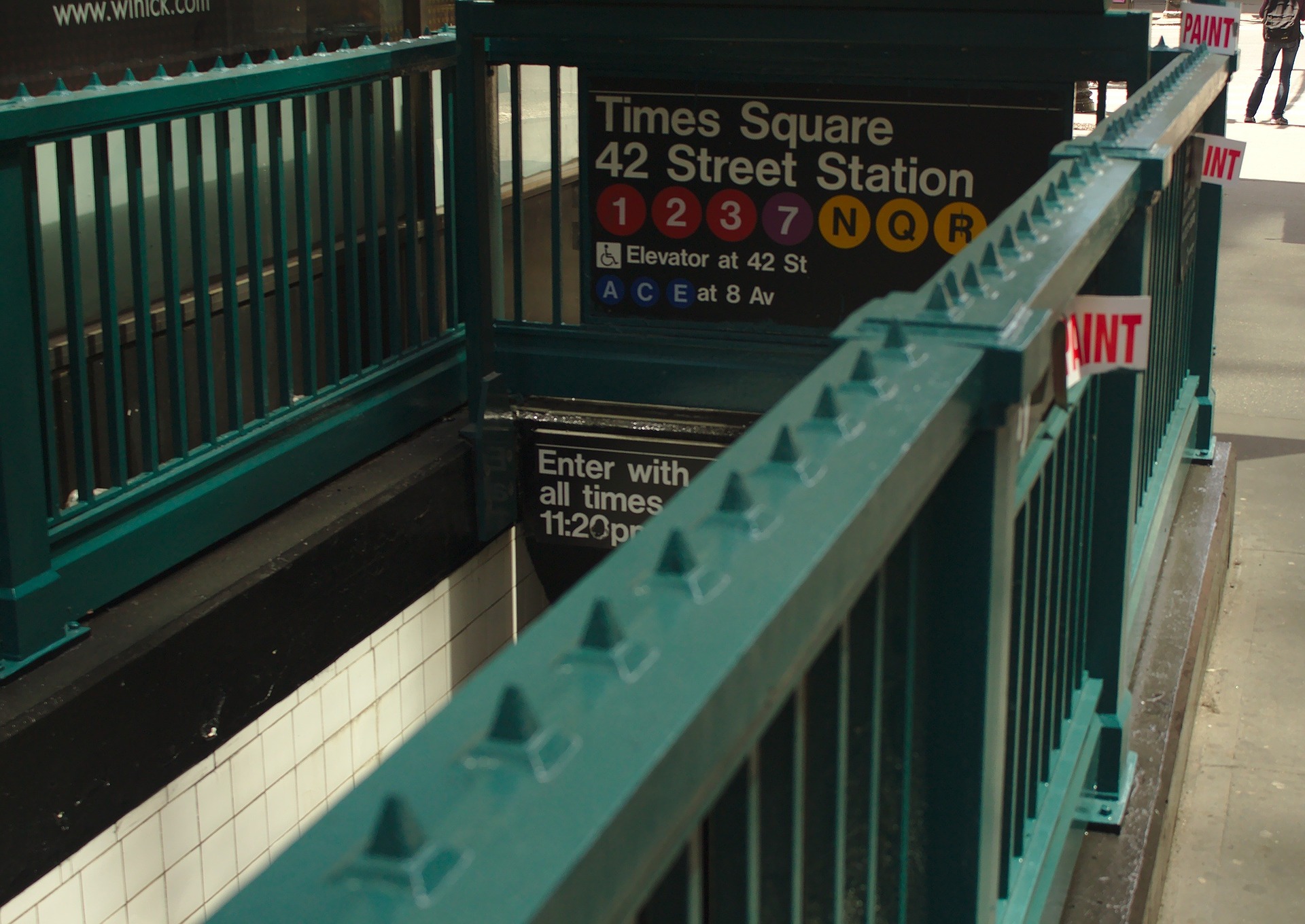Sign up for The Media Today, CJR’s daily newsletter.
At 110th Street in Manhattan, Aaron Gordon boarded a downtown 1 train. He wore a V-neck t-shirt, shorts, and a backpack. A few days earlier, for his popular weekly newsletter, Signal Problems, Gordon had written about chronically broken air conditioning on the 1 line. On this day, the high was 89 degrees, and as the train pulled into the station, he anticipated the worst. When the doors opened, he lucked out: Cold air blasted from the vents, a luxury that feels too rare. But this did not elevate his opinion of the Metropolitan Transportation Authority. “Ultimately, the story of the MTA is of a bureaucracy that doesn’t function well,” he said.
Gordon, who is 28, grew up in Trumbull, Connecticut, off the Metro North. As a teenager, on trips into the city, the subway represented freedom. “The juxtaposition of how the subway can make me feel the most powerful and the most neutered is why I find it so fascinating,” he explained. Gordon began covering the subway system for The Village Voice last year, in the “summer of hell,” as it was known in the transit world. It was a freelance gig, but he soon became an obsessive follower of MTA drama, writing stories about the time a typo caused commutes from Brooklyn to Manhattan to take hours, why the decrepit state of the Chambers Street stop is perfectly representative of the system, and the MTA’s plan to make buses faster. Gordon nevertheless remained an avid proponent of public transit, and got to be an expert at calculating efficient travel. Are there any posted delays? When did the last train come? Are there any complicated intersections on your preferred line? “It’s part of my job to notice these things,” he said. But the biggest question from friends and readers was always, What the fuck is wrong with the MTA?
ICYMI: The Washington Post heavily criticized for recent feature
“People felt they couldn’t get those answers from existing coverage,” Gordon said, as he transferred to an express train at 96th Street. He pitched to the Voice a weekly column about public transportation. His editor turned him down, but he decided to do it anyway. Eight months ago, he debuted Signal Problems, in familiar newsletter format; published every Friday, it offers readers news and commentary on the MTA, plus a roundup of domestic and international transportation headlines and “dog in a bag” photos, submitted by readers. The newsletter toggles between the practical and the philosophical, analyzing policy changes and putting daily delays into historical context. The July 6 edition offered a review of the MTA’s new transit app—which is, as could be predicted, not very good.
On the express train, Gordon noted its speed. “This is how fast the 4 and 5 line used to go,” he said. “This is one of the only lines left that can go 55 miles per hour. Usually the others are restricted to 35 to 40 miles per hour. If you go over, the emergency brake trips.” Conductors who go over the limit face a loss of vacation days or forced retirement. “They don’t trust the instruments,” Gordon added. “So a lot of the times they go significantly slower.”

Aaron Gordon. Courtesy of the Village Voice.
At 42nd Street, more passengers boarded. Gordon found space in a corner. A man in a tie gently interrupted. “Excuse me,” he said. “What is your job? This conversation is fascinating.” Gordon smiled, answered, and asked the man what his trains are (the 3 and 4).
Poor communication from the MTA helps carve out a niche for Signal Problems to act as a translator in ways that traditional transit reporting doesn’t always have time and space for, particularly as city newsrooms diminish their staffs. “The information gap between what riders are told and what’s going on is large,” Gordon said. “The MTA thinks most riders don’t want to know exactly what’s wrong, but what I’ve found is they do want to know. This is meaningful time lost. They do want to know why their day was worse.”
A brief scroll through the MTA’s mentions on Twitter supports Gordon’s theory—he gets many column ideas from “transit Twitter,” as he calls it—and he hears from readers, too. (Some commuters wonder why the Q train from Brooklyn stops every morning in a tunnel before crossing the Manhattan Bridge; MTA workers are interested in how customers perceive them.) Gordon declined to provide subscription numbers, but he would say that recipients consistently open the newsletter at least 60 percent of the time (a high rate of interest). He spends hours researching and writing the column each week, but has thus far made no profit. This month, he started a fundraising effort for Signal Problems, incentivized with a tote bag—now standard media marketing procedure.
Gordon, who lives in Brooklyn’s Prospect Lefferts Gardens (by the 2, 5, B, and Q trains), rides the subway several times a week. But he works from home, so he typically avoids the morning rush. His worst ride may have been the time he got stuck on the Manhattan Bridge for 45 minutes. The conductor made no announcements. “I found it incredibly frustrating, just infuriating,” he said. “I remember a distinct loss of agency bordering on humiliation.” He doesn’t romanticize the past, either. “People have this idea that there was a mythical time when it was easy to get around, when getting around wasn’t a pain in the ass,” he said. “As far as I can tell, that doesn’t exist.” He paused. He still has lots of love for the MTA, which, for all its faults, he views as the best public transportation system in America. “It’s not to say we shouldn’t expect better.”
As the train rolled on, toward Grand Army Plaza, the car became clogged, then nearly empty. (In all the rattling, this reporter experienced the challenge of riding a subway while taking notes.) Service was speedy that day—the trip took about 40 minutes from the Upper West Side. But moments after the train lurched towards the Eastern Parkway-Brooklyn Museum stop, it stopped in the tunnel for ten minutes and, if the MTA offered an explanation, no one could hear it through the car’s garbled loudspeakers. Gordon logged onto Twitter and saw a report: there had been “police activity” at Sterling Street. He ended up walking 40 minutes home, through Prospect Park.
ICYMI: When a candidate has fake credentials—and sends you her fake diploma
Has America ever needed a media defender more than now? Help us by joining CJR today.



